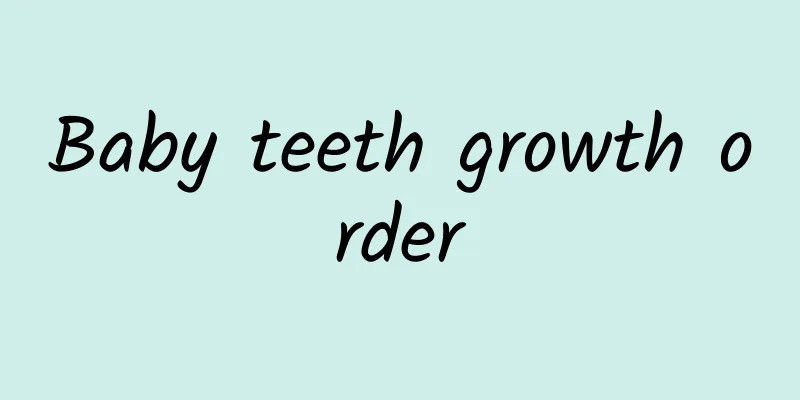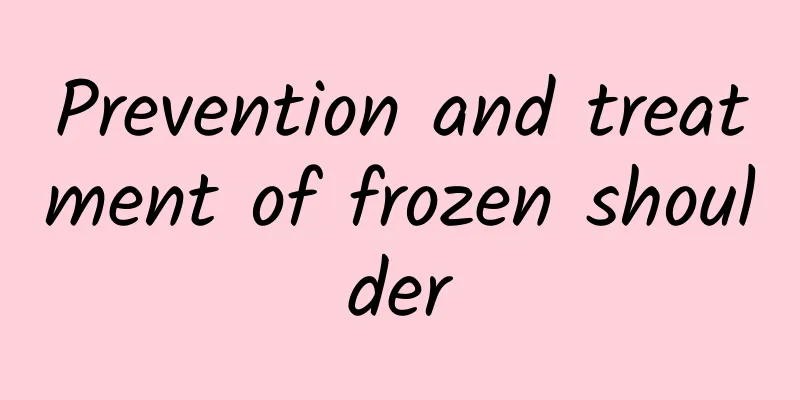Baby teeth growth order

|
There is a certain order for babies to grow teeth. For example, when the baby is about seven months old, the first tooth will start to grow on the left and right. When the baby is 6 to 8 months old, the two middle teeth will grow in the lower alveolar. As time goes by, the teeth will gradually grow together. This is what we usually call deciduous teeth. For parents, they must pay attention to their children's oral hygiene and let their children develop good hygiene habits. Baby teeth growth order Generally, babies start to grow teeth when they are 6 months old. Sometimes when the baby smiles, two small teeth will be exposed on the top or bottom. They are pointy and very cute. So, what is the normal order for a baby's teeth to grow? 6-8 months: Two middle incisors grow out of the lower alveolar teeth, followed by two more incisors grow out of the upper alveolar teeth. 8-12 months: The two outer incisors of the upper alveolar teeth grow out, and then the two outer incisors of the lower alveolar teeth emerge from the gums. 12-16 months: The first deciduous molars appear in the upper and lower alveoli. 16-20 months: Canine teeth grow in the upper and lower alveoli. 20-30 months: The two second deciduous molars in the lower alveolar teeth and the two second deciduous molars in the upper alveolar teeth grow out, and all 20 deciduous teeth are grown. Babies start to grow teeth at 6 months old, and by the age of 2 and a half, all 20 deciduous teeth have basically come out. The above is the normal order in which babies grow teeth. The editor reminds you that the order of baby's teeth eruption is related to genetics and nutrition. Usually babies' teeth erupt in order, but there are also many babies whose teeth erupt in the reverse order. As long as the quality of the teeth is good, it doesn't matter if the order of teeth eruption is disordered. Things to note for teething babies 1. Teething is generally painless, but some babies may feel uncomfortable and irritable. You can put a clean finger or moistened gauze in your child's mouth and rub the gums, which may help him; cool teething rings can also be used to relieve gum discomfort during teething. 2. Be careful when using teethers. Excessive use of teethers is not good for children. 3. Teething does not cause fever. If your child has a fever, you should take him to see a doctor as there may be another cause. 4. Breastfeeding is beneficial to the baby's tooth development. 5. Your baby can use a cup when he is 6 months old, but stop giving him a bottle when he is 1 year old. These are good for his tooth development. 6. Just add some water or regular milk between meals. Don't let your children drink fruit juice or other beverages because they contain a lot of sugar. If you want to give your baby juice or sweetened milk, you can give it directly to your child during meals. 7. When your baby's first tooth comes out, you should brush his teeth twice a day. The most important time is before bed at night. Use a soft baby toothbrush, apply a small amount of toothpaste, and gently brush his teeth. Be careful not to let children swallow toothpaste. |
<<: How effective is light-curing dental restoration?
>>: How long does cold light teeth whitening last?
Recommend
What is the best way to wash your vagina?
Compared with men, women have to do much more ted...
What are the symptoms of ovulation day?
The ovulation day is the time when a woman ovulat...
What to do if you catch a cold from the fan
When the weather is hot, you like to use a fan, e...
Why do you keep clearing your throat?
Clearing the throat is caused by some foreign mat...
How to make pills
Nowadays, if we want to achieve good conditioning...
What medicine is most effective for back pain?
There are many people around us who often complai...
How to cure stiff neck quickly
Stiff neck is a common thing in life. Don’t be up...
What is cervical cyst?
Nowadays, more and more women are suffering from ...
What is the function of azalea flowers
Rhododendron is known as the "king of flower...
Effects of Chinese herbal medicine Angelica dahurica
The traditional Chinese medicine Angelica dahuric...
High hemophagocytic granulocytes
There is an important type of white blood cell in...
Anal bleeding after pooping
Blood in the stool is mainly caused by the most c...
Should I squeeze pimples?
Having acne is a very distressing thing. Whether ...
Causes of pain in the two tendons behind the neck
In life, when we look at the computer for a long ...
What to do if pregnant women have thalassemia? Dietary conditioning is effective
Thalassemia is a disease that most people may hav...









